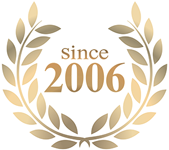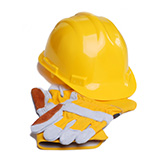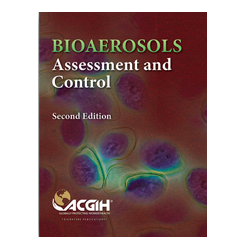This second edition of the ACGIH publication, Bioaerosols: Assessment and Control, has been much anticipated by indoor environmental quality (IEQ) researchers in academics, practitioners such as certified industrial hygienists (CIHs), and the public in general who often have a personal interest in this field. The first edition, known as the “Red Book” due to the color of the hard cover, was published in 1999, and since then, it has been the gold standard on the impact that biological particles have on our lives.
The first edition was strongly influenced by bioaerosols of concern at the time, particularly mold and tuberculosis. This second edition of Bioaerosols: Assessment and Control has been expanded to address contemporary bioaerosols, including coronavirus, H1N1, Legionella, recombinant and synthetic nucleic acids, prions, and agents of bioterrorism, notably SARS-CoV-2. New chapters cover bioterrorism agents and respiratory protection. Existing chapters are updated and expanded.
The book starts with an introduction to bioaerosols, health effects, hazard and risk assessment, and prevention of indoor microbial contamination. It progresses to building inspections, sampling techniques, analysis, and interpretation of data. Remediation and control methods are discussed, along with the role of medical professionals.
Chapters cover specific biological agents like bacteria, fungi, viruses, house dust mites, and allergens. Sections within chapters are numbered for easy reference. Acronyms and abbreviations are introduced when first used, with full terms listed in the appendix. Latin genus and species names are given on first use, with subsequent references abbreviated.
This book focuses on identifying and controlling bioaerosol exposures in various settings, including nonindustrial, institutional, commercial, healthcare, residential, and certain manufacturing and recreational environments. It emphasizes evaluating actual or potential bioaerosol exposures and preventing material or structural damage due to biological growth. Key themes include understanding the source-pathway-receptor paradigm and using a scientific approach to assess potential bioaerosol contamination.
The book discusses the systematic process of hypothesis evaluation, which may involve visual and olfactory assessments or environmental measurements and sampling. It also covers the limitations and interpretation of air and source samples for various biological agents and the challenges in establishing exposure limits due to the diverse effects of bioaerosols and the lack of clear dose-response relationships. Overall, the book provides insights into assessing health risks associated with bioaerosol exposures based on case-by-case evaluations combining health assessments, risk assessments, and environmental observations.



